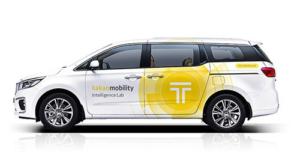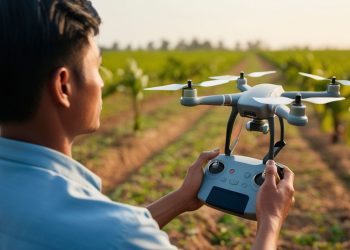Kakao Mobility announced on Wednesday that it received a temporary driving permit from the South Korea’s Ministry of Land, Infrastructure, and Transport for autonomous vehicles. Kakao Mobility is a subsidiary of Kakao Corp., which provides online taxi-hailing and parking services through its transportation service app, Kakao T.
Through the permit, the company plans to go beyond technology research based on mobility data. It said that it is preparing for the full-scale integration of autonomous driving-based services in the real world.
According to the ministry, Kakao Mobility would start the level 4 autonomous vehicle technology test from mid-March. In Level 4 autonomous driving, vehicles can set their routes and work safely without the driver’s intervention. It is distinct from Level 5, which is a fully self-driving stage where the driver must board and can only operate in designated areas.
The service provider said that the strength of its temporary permit for autonomous driving is that it can directly combine self-driving mobility services through the Kakao T platform. Almost 24 million people joined the platform beyond research and experiment.
The combination is possible because the mobility service, which starts from the Kakao T platform to hailing, riding, getting off, and paying, can be commercialized in real-time.

Autonomous Driving Technology
Kakao Mobility said that it would verify and test five technologies incorporated in the autonomous driving vehicles. The verification would ensure the safety of its users.
The company will verify the “cognitive technology” for driving environments such as roads, vehicles, pedestrians, and traffic lights. Real-life situations and environments are crucial to the commercialization of autonomous driving-based services.
Secondly, the “judgment technology” determines driving methods such as lane maintenance, lane change, and shoulder stops to reach the destination based on the cognitive results.
Third, the “vehicle control technology,” which is responsible for steering, acceleration, and deceleration.
The “Navigation technology” provides the best route through estimation of vehicle location on the map and road guidance for lane units.
Lastly, “positioning technology” improves vehicle location accuracy.
In addition, the company intends to further advance its autonomous driving platform technology by combining the “AI-powered dispatch algorithm” that efficiently connects vehicles and passengers.
Permit Duration
The effectivity of the temporary permit for autonomous driving operation given by the ministry would cover five years starting from March 4. Kakao Mobility stated that it would begin road tests as soon as it receives a temporary license for the autonomous vehicle.
“We will accelerate commercialization so that users can experience autonomous driving services in real life by using our autonomous driving technology and the mobility technology acquired through Kakao T.”
-Yoo Seung-il, director of the Kakao Mobility Intelligence Research Institute
Yoo added that the company would also actively collaborate with various partners such as start-ups, automobiles and hardware manufacturers, and organizations related to autonomous driving to advance its commercialization.







